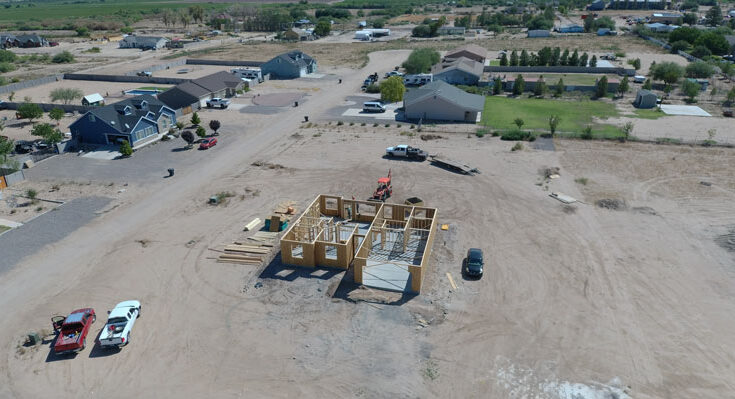The average homeowner doesn’t care about the size of the company putting in their new roof or framing out their custom kitchen. What they care about is whether someone shows up when they say they will, charges what they quoted, and doesn’t leave burrito wrappers in the crawl space. And lately, it’s the smaller, often privately-run contractor crews that are winning that trust—and the work.
There’s been a noticeable shift in how business flows in residential and light commercial construction. The big firms still land the government contracts and high-rise bids, sure, but smaller crews are quietly pulling in a growing share of high-value work across the country. Some of this is about efficiency, some about flexibility. But most of it boils down to one thing: these teams work like they’ve got skin in the game—because they usually do.
Flexibility Beats Overhead Every Time
Large contracting firms tend to come with an impressive arsenal—project managers, client liaisons, legal teams, and branded trucks that probably cost more than your house. But with all that scale comes bureaucracy, and bureaucracy is slow. Meanwhile, a two- to five-person outfit can make decisions on the fly, adjust schedules on a dime, and avoid the death spiral of coordination emails and change order forms.
Homeowners and small developers are starting to see the value in that kind of nimbleness. It’s one thing to promise a three-month turnaround; it’s another to actually finish before the siding guys get bored and ghost the job. Smaller builders know that every delay costs them directly, not just in money, but in reputation, and that translates to a kind of hustle and follow-through that clients remember.
It’s not just residential projects, either. Light commercial spaces like boutiques, clinics, and restaurants have become a playground for skilled independent crews who can handle build-outs quickly without the red tape. They’re building relationships, not just structures, and that tends to keep the calendar full.
The Personality Factor: Trust Is the New Metric
There’s no getting around it: construction is personal. Whether it’s someone’s dream home or a new storefront they’ve sunk everything into, people want to feel like they’re not just a job number. That’s where smaller contractors are finding an edge. When the person quoting the job is the same one swinging the hammer, there’s a level of transparency and accountability that just doesn’t happen when a superintendent you’ve never met shows up two weeks in.
This isn’t about pretending smaller crews are saints. Everyone’s heard the horror stories. But the difference is that successful independent builders usually live in the communities they serve. Their kids go to school with your kids. They can’t vanish behind a corporate phone tree. That hometown accountability matters, and it’s reshaping how clients choose who to trust with their projects.
There’s also a surprising amount of word-of-mouth momentum at play. A good experience with a small crew spreads fast, especially when the work speaks for itself. Unlike larger firms that rely heavily on SEO, PPC campaigns, and brand equity, smaller contractors tend to grow through actual referrals, and that creates a deeper kind of staying power in their markets.
Why Tech Is Now Leveling the Playing Field
A few years ago, it was easy to assume the big firms had a permanent edge just by having the budget to throw at new tech—laser scanners, drones, AI-driven project planning, all of it. But that gap is narrowing fast. Software tools that used to be locked behind expensive licenses are now showing up in app form, and even modestly-sized crews are getting smarter about using them.
The real sleeper hit? Refrigeration software for techs. It’s one of those niche tools that sounds hyper-specific—because it is—but it’s changing the way HVAC and refrigeration subcontractors operate. With these platforms, even one-man operations can walk onto a jobsite with every diagnostic tool and system log in their pocket. That means faster installs, fewer callbacks, and more confidence from clients who care a lot more about whether their walk-in cooler stays at temp than how many employees your business has.
Beyond that, smaller builders are adopting mobile invoicing, digital blueprint management, and even VR walkthroughs to punch above their weight. It’s not about looking techy. It’s about using the right tools to keep things tight and reduce friction. When done well, it makes the entire project experience smoother for everyone.
Small Crews, Big Talent Pools
Let’s clear up one myth: just because someone isn’t working for a big-name general contractor doesn’t mean they’re less skilled. In fact, some of the best masons, framers, and finish carpenters in the game are working independently or in tight-knit crews of fewer than ten.
Many of them left larger firms for better control of their schedule, more rewarding pay structures, or just the ability to work the way they believe gets the best result. And that migration shows no signs of stopping. In fact, several recent construction trends show a growing pipeline of mid-career tradespeople opting to join or launch small crews rather than climb a corporate ladder that doesn’t serve them.
This talent shift matters. It means more high-skill workers are going directly to market rather than filtering through layers of management. It also means clients increasingly encounter crews that combine experience with agility—a combo that’s hard to beat.
Profitability Without the Bloat
Big firms often need big margins to keep the lights on. Between office staff, fleet management, insurance overhead, and executive salaries, their bids have to stretch to make sense. Smaller outfits, on the other hand, tend to run lean. That doesn’t always mean cheaper prices—although sometimes it does—but it does mean more of the client’s money goes toward labor and materials rather than padding out admin costs.
And when those smaller crews are run smartly, they can actually be more profitable per job than larger competitors. They aren’t chasing dozens of jobs at once. They’re laser-focused on the ones that count. Fewer balls in the air means fewer dropped, which translates into better client retention and less cleanup work from avoidable mistakes.
Some of these private builders are quietly raking in six-figure incomes doing just a handful of jobs a year. And because they’re not under pressure to feed a massive pipeline, they can afford to walk away from bad leads or difficult clients—giving them more control over their business and their time.
Why It All Matters Right Now
The rise of small private builders isn’t a cute side trend—it’s a real shift in how construction is being done, especially in the residential and light commercial worlds. For clients, it means more personalized service, tighter crews, and often better value. For tradespeople, it’s a path toward ownership, autonomy, and pride in the work they do. And for the industry as a whole, it’s a reminder that big doesn’t always mean better.
It’s not that the big players are going away. But they’re no longer the only game in town. That kind of change has a way of rewriting the rules—one project at a time.









